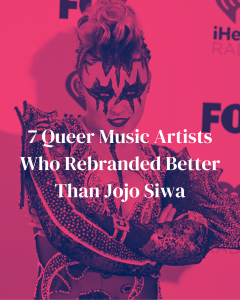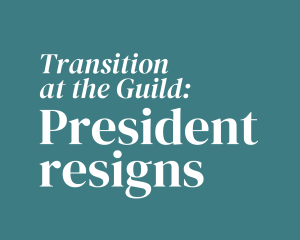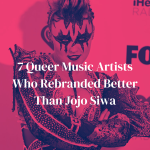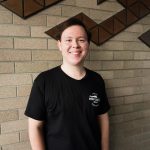
Okay, hear me out. As someone who is a self-proclaimed Swiftie, as well as an avid sports fan, I feel like I have a unique insight into both camps. And both camps feel eerily similar.
Now, I’m not just saying this because Taylor Swift and Travis Kelce are dating, bringing both sport and Swift into the spotlight, although I do think it is interesting that the men constantly wanting people to watch NFL with them are now getting mad that viewership is going up. We’ll touch on that later, don’t you worry.
Let’s get back to it. I love me a bit of soccer (or football if you’re feeling pretentious), so a few weeks back I went to my first Brisbane Roar game. Being a newbie to the A League (World Cups are more my style), I accidentally booked tickets in what is called “The Den”. If you don’t know what I’m referring to, I won’t judge… I had no idea what I was walking into.
“The Den” is essentially a mosh pit for the hardcore fans of Brisbane Roar. Despite booking seats, it’s more like a free-for-all, where the biggest group of eshays you’ve ever seen all stand behind the home goal, cheering for their team and chanting different songs. Those fellas in The Den are a passionate bunch.
As I sat on the edge of the screaming fans, admiring their commitment, I was struck by the similarity between the way they were acting and the behaviour most would contribute to ‘fangirls’.
And, as someone who survived the Great War for Taylor Swift tickets, I know my fair share of fangirls. In fact, I would probably consider myself one – not a hardcore one, per se, but still.
I ended up getting tickets for Melbourne Night 1 – Tay Tay’s first concert in Australia since her Reputation tour back in 2018. Safe to say, the concert was magical. But I’m not here to flex,I’m here to tell you what fangirls and sports fans have in common.
So, without further ado, let me list these similarities. They both:
- Stand up for a solid three hours or so
- Learn chants to support their team/person
- Dress up in corresponding outfits for their team/person (I felt so awkward being the only person not in Roar merch. My bad.)
- Lose their voices before the night is over
- Have very exaggerated reactions to anything happening with their team/person (Don’t even get me started on Exile Girl.)
- Often use social media to support their team/person – some even go so far as to run fan accounts.
- Spend exorbitant amounts of money to see their person/team (You’re telling me the CHEAPEST ticket to the Superbowl is over EIGHT GRAND??)
- Know copious amounts of lore on their team/person (It’s weird if I know which Taylor Swift song is about who, but you can name the last 20 years of NRL champions? Go off.)
- Often own posters, merch, or other trinkets relating to their person/team (I’m broke from simply buying one tote bag at the Eras Tour.)
- Often are willing to travel interstate, or even internationally, to see their person/team play
- Make signs for their person/team to see at their event
As much as this list of similarities could go on and on, there is one (quite stark) difference: how society perceives them.
While sports fans are simply seen as being passionate, fangirls are portrayed as overemotional, hysterical, and, ultimately, stupid little girls.
Look, it’s not as if I’m the first person to notice this. Just google fangirls vs sports fans and you’ll see hundreds of articles discussing this disparity.
The explanation? Misogyny. Let’s look at the stats, shall we? Obviously, in an ideal world, the demographic of sports fans would be a 50/50 split across men and women. Instead, a 2022 global study found that 77% of men followed sports, while only 56% of women did the same. More specifically, 44% of sports fans are men who range between the ages of 35-44 years old. On the other side of the coin, we have fangirls, primarily made up of women between 12-24.
So why is it that we vilify women acting in the exact same way as men, just in different contexts? Well, it’s this fun thing called ‘femmephobia’. Since the 1970’s, our culture has slowly been devaluing any modicum of femininity. The whole concept of femininity is now seen as infantile, weak, and anti-intellectual. So, while it doesn’t inherently make you dumb for learning lyrics to songs you’ve loved since you were six and making friendship bracelets to trade at a concert – to foster community and relationship, no less – you are seen as crazy and childish.
But this isn’t exactly a new thing. The shaming of passionate women goes all the way back to the first iteration of ‘fangirls’ – Beatlemania. Teenage girls screaming, crying, and chasing The Beatles down the street – that’s the first time society saw this kind of passion. But it wasn’t the last.
Since then, generations of girls have found artists they’re passionate about. Bieber Fever, Directioners, Swifties, Harries – the list could go on. These girls create communities centred around their chosen artist. They find community, and foster relationships stronger than you’d expect. They create trends, art, inside jokes, and a separate culture completely. Fandoms have more influence than we give them credit for.
Take the NFL, for example. They’ve never really had a female-centric fanbase. But, since Taylor Swift started dating Kansas City Chiefs tight-end Travis Kelce in September last year, female support for the NFL has soared. We’re talking an 11% increase in a few months. Nearly two-thirds of millennial and Gen Z women now have a favourable view of the NFL. Kelce’s jersey sales spiked 400% after Tay Tay’s appearance at one of his games. Just her presence at these games has brought in an estimated $122 million USD in brand value for the NFL. Her airtime during the Super Bowl alone was worth more than $12 million.
What do we do when these separate entities become intrinsically linked? All of a sudden, Swifties and sports fans – two sides historically pitted against each other – are in the same circles, rooting for the same team.
Some are capitalising on the situation, with Cetaphil creating a heartwarming Super Bowl ad where a father and daughter bond over Taylor Swift at the NFL.
But others haven’t taken the same route, instead detesting the attention that Swift garners at the games. In a ‘no girls allowed’ type of discourse, men moved to social media to complain about the superstar’s airtime during NFL games – though she’s typically on screen for less than 25 seconds per game. Complaints included tweets like “Dear NFL Media: Can U Please Stop Forcing Taylor Swift On Football Fans!”, “Why does Taylor Swift have to ruin EVERYTHING about the NFL?!”, and “Taylor Swift is going to ruin the NFL. I love Travis but it’s getting old. Really old.”
It’s not just tweets, though. In an absolutely disgusting attempt to embarrass the superstar, AI generated deepfakes were circulated around the internet, depicting Swift being sexually assaulted in the stands of an NFL game. Though it sparked a necessary conversation around regulating AI usage, this vile attack was a stark reminder that women can’t exist in male-dominated spaces without being either preyed upon or cast as the villain.
But let’s get back to my point. Sports fans and fangirls act the same and get treated completely differently. Blame patriarchy, blame misogyny, blame the women – I don’t actually care. But next time you come for a Swiftie for being excited to hear a Taylor song in public, you better be damn sure your ears don’t perk up at the sound of an F1 car going vroom.







